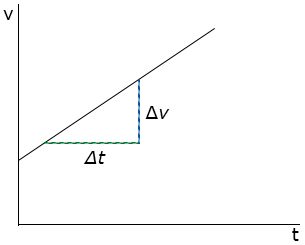EQUATIONS OF UNIFORMLY ACCELERATED MOTION
CONTENT
- Velocity – Time v-t Graph
- Relative Motion
- Derivations of Equation of Uniformly Accelerated Motion
- Derivation of Equations of Uniform Motion
- Application of the Equations of Uniform Accelerating Bodies
- Motion of Bodies Under Gravity
Velocity – Time v-t Graph
1. Gradient of a v-t graph = acceleration

\(acceleration = gradient \\ = {\text{change in velocity} \over \text{change in time}} \\ acceleration (a) = \frac{Δv}{Δt}\)
2. Area under a v-t graph = distance.

- Total distance covered during the motion = area of trapezium 0edc
- Distance covered during acceleration = area of triangle 0ea
- Distance covered during constant velocity = area of rectangle aedb
- Distance covered during deceleration = area of triangle bdc
- Acceleration = slope of line 0e, \(a = \frac{ae}{0a}\)
- Deceleration = slope of dc, \(-a = \frac{bd}{bc}\)
Example 1:
A car starts from rest and accelerates uniformly to 15ms-1 in 5 s.
You are viewing an excerpt of this lesson. Subscribing to the subject will give you access to the following:
- NEW: Download the entire term's content in MS Word document format (1-year plan only)
- The complete lesson note and evaluation questions for this topic
- The complete lessons for the subject and class (First Term, Second Term & Third Term)
- Media-rich, interactive and gamified content
- End-of-lesson objective questions with detailed explanations to force mastery of content
- Simulated termly preparatory examination questions
- Discussion boards on all lessons and subjects
- Guaranteed learning